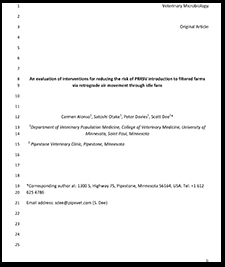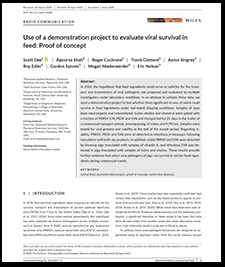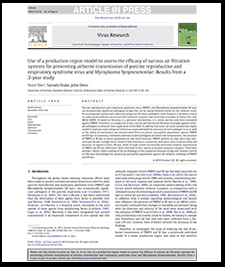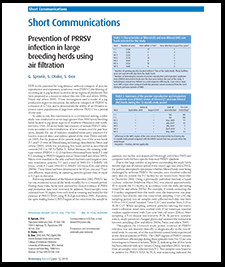An evaluation of interventions for reducing the risk of PRRSV introduction to filtered farms via retrograde air movement through idle fans
The purpose of this study was threefold: 1. to prove that PRRSV introduction via retrograde air movement through idle fans is a true risk; 2. to determine the minimum retrograde air velocity necessary to introduce PRRSV to an animal airspace from an external source; and 3. to evaluate the efficacy of different interventions designed to reduce this risk.
Use of a demonstration project to evaluate viral survival in feed: Proof of concept
We used a demonstration project to test whether three significant viruses of swine could survive in feed ingredients under real-world shipping conditions. Samples were tested for viral genome and viability at the end of the transit period.
The results provided further evidence that select viral pathogens of pigs can survive in certain feed ingredients during commercial transit.
Use of a production region model to assess the efficacy of various air filtration systems for preventing airborne transmission of porcine reproductive and respiratory syndrome virus and Mycoplasma hyopneumoniae
We used a production region model to evaluate meteorological risk factors associated with the presence of each pathogen in air as well as the ability of mechanical and antimicrobial filters to protect susceptible populations against PRRSV and M hyo.
Conditions common to both pathogens included cool temperatures, the presence of PRRSV or M hyo in source population air and wind direction.
Prevention of PRRSV infection in large breeding herds using air filtration
DUE to the potential for long-distance airborne transport of porcine reproductive and respiratory syndrome virus (PRRSV), the filtering of incoming air to pig facilities located in dense regions of production has been proposed as a means to reduce this risk.
Results from this pilot study suggest that farms in dense regions of pig production are at risk of PRRSV airborne challenge and that the filtering of incoming air is an effective means to protect susceptible populations.




